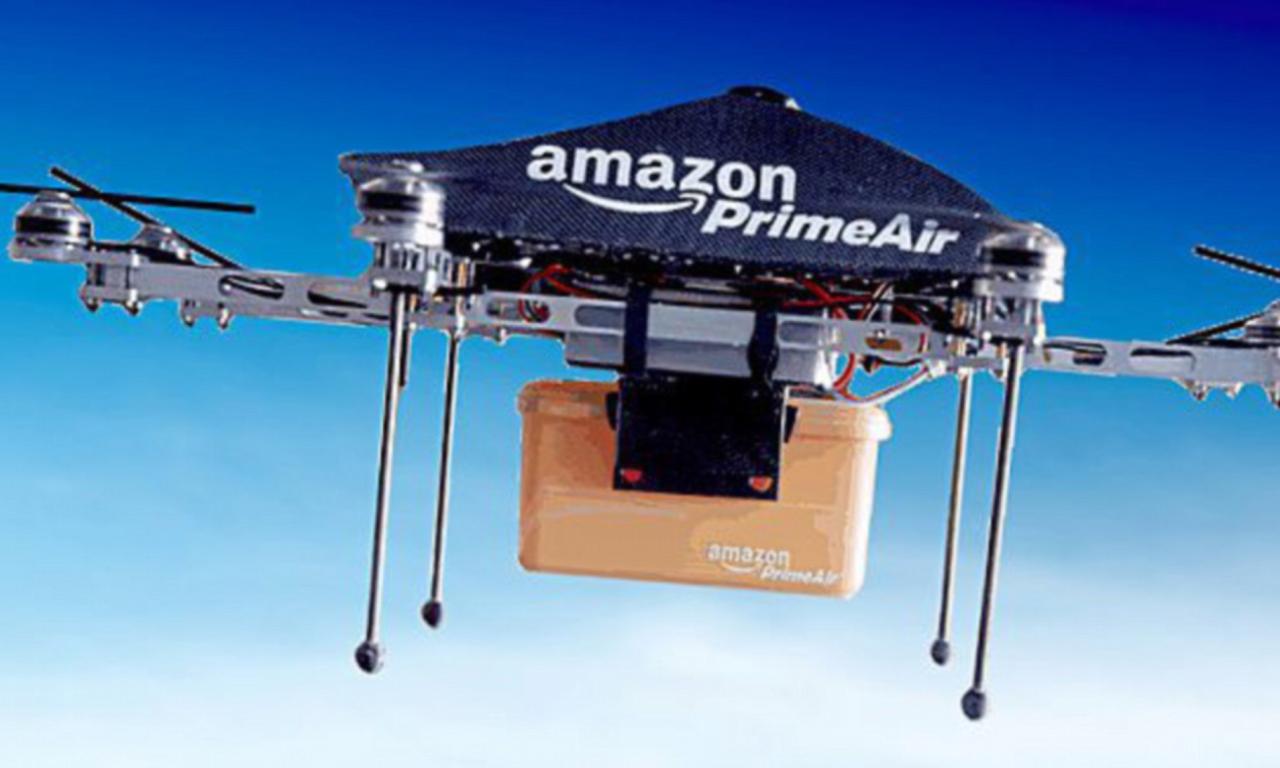Amazon drone delivery locations are rapidly expanding, revolutionizing how we receive packages. This guide dives into the current status of Amazon’s drone delivery program, exploring the factors influencing location selection, the customer experience, future expansion plans, and the broader environmental and societal impacts. We’ll examine the technology, regulations, and challenges involved in bringing this innovative delivery method to more communities.
From the technological infrastructure required to support these deliveries to the key criteria Amazon uses for location selection, we’ll uncover the intricacies of this exciting development. We’ll also consider the customer experience, addressing concerns about safety and reliability, and look ahead to future expansion and the potential impact on various aspects of our lives, including the environment and the logistics industry.
Current Amazon Drone Delivery Program Status
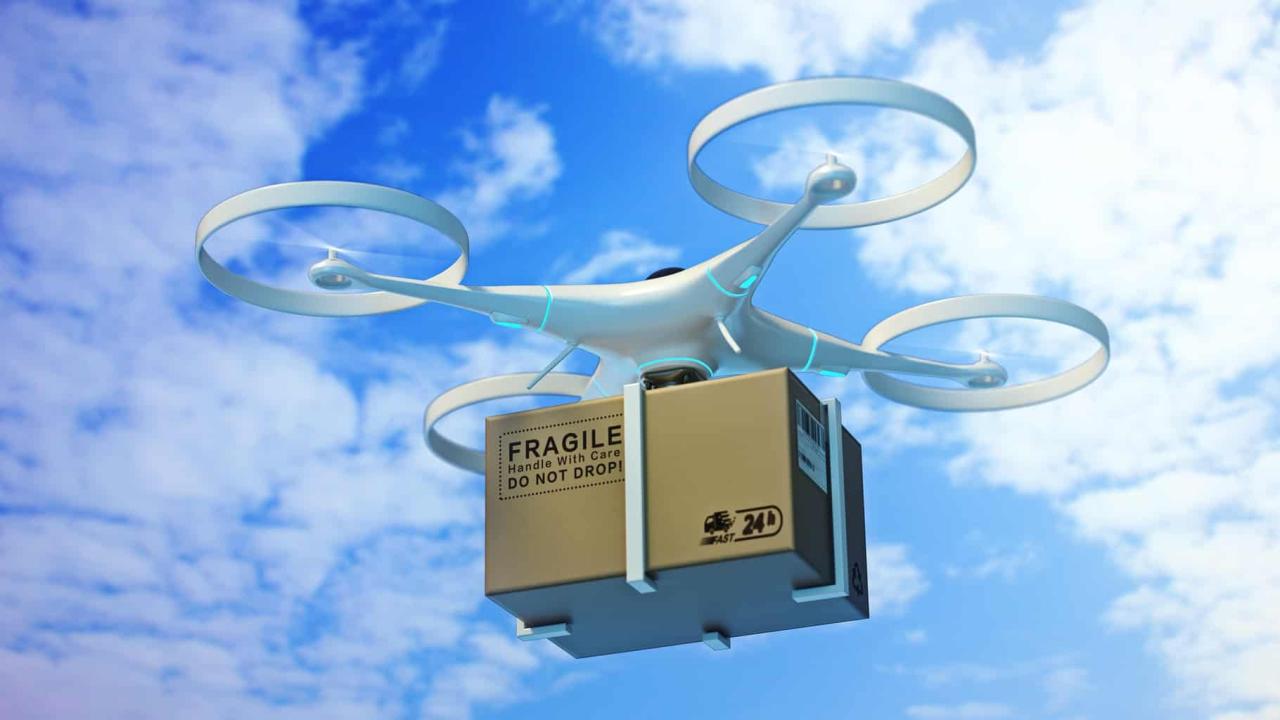
Amazon’s drone delivery program, officially known as Amazon Prime Air, is still in its relatively early stages, but it’s steadily expanding its reach and capabilities. While not yet a widespread service, it represents a significant step towards faster and more efficient delivery options for certain customers. The program’s ongoing development showcases Amazon’s commitment to innovation in logistics.Amazon Prime Air’s geographical scope is currently limited.
The service operates in select areas within the United States, primarily focusing on suburban and rural communities. This targeted approach allows Amazon to test and refine its technology in controlled environments before expanding to more densely populated urban areas, which present greater logistical challenges. The specific locations are not publicly released in their entirety, but the company periodically announces new service areas as they become operational.
Geographical Scope of Amazon Drone Delivery
The current operational areas for Amazon Prime Air are carefully chosen for their suitability for drone operations. These locations typically have relatively open airspace, minimal obstacles, and sufficient infrastructure to support the drones’ takeoff, landing, and navigation. Expanding into urban environments requires overcoming significant hurdles, such as navigating complex airspace, managing drone traffic, and ensuring safe operation around buildings and people.
Therefore, the expansion strategy focuses on gradual rollout and rigorous testing in progressively challenging environments.
Types of Items Eligible for Drone Delivery
Currently, Amazon Prime Air only delivers smaller packages. These typically weigh under five pounds and include everyday items like books, snacks, over-the-counter medications, and small electronics. The size and weight restrictions are primarily due to the payload capacity of the drones and safety regulations. Larger or heavier items remain outside the scope of drone delivery for now, and the program is designed to complement, not replace, traditional shipping methods.
Technological Infrastructure Supporting Amazon Drone Delivery
Amazon Prime Air relies on a sophisticated network of technologies to function. This includes a fleet of autonomous drones equipped with advanced sensors, GPS, and obstacle-avoidance systems. A crucial component is a network of drone delivery stations, which serve as takeoff and landing points. These stations are strategically located within the service areas and equipped with charging and maintenance facilities.
Amazon also utilizes advanced software and algorithms for flight planning, route optimization, and real-time monitoring of drone operations. Furthermore, robust communication systems are essential for maintaining continuous contact with the drones and ensuring safe and efficient delivery. The entire system necessitates significant investment in research and development, infrastructure, and regulatory compliance.
Comparison of Drone Delivery Speed and Efficiency to Traditional Shipping
Drone delivery offers the potential for significantly faster delivery times compared to traditional shipping methods, particularly for shorter distances. In ideal conditions, Amazon Prime Air drones can deliver packages within minutes of order placement. However, traditional shipping methods, like trucks and planes, often require more time due to factors such as transportation networks, sorting facilities, and delivery routes.
The efficiency of drone delivery depends heavily on factors like weather conditions and airspace availability. While drones offer speed advantages for certain scenarios, traditional shipping remains essential for larger, heavier, and longer-distance deliveries. The ultimate efficiency comparison depends on the specific delivery parameters and the relative costs associated with each method.
Factors Influencing Location Selection for Drone Delivery
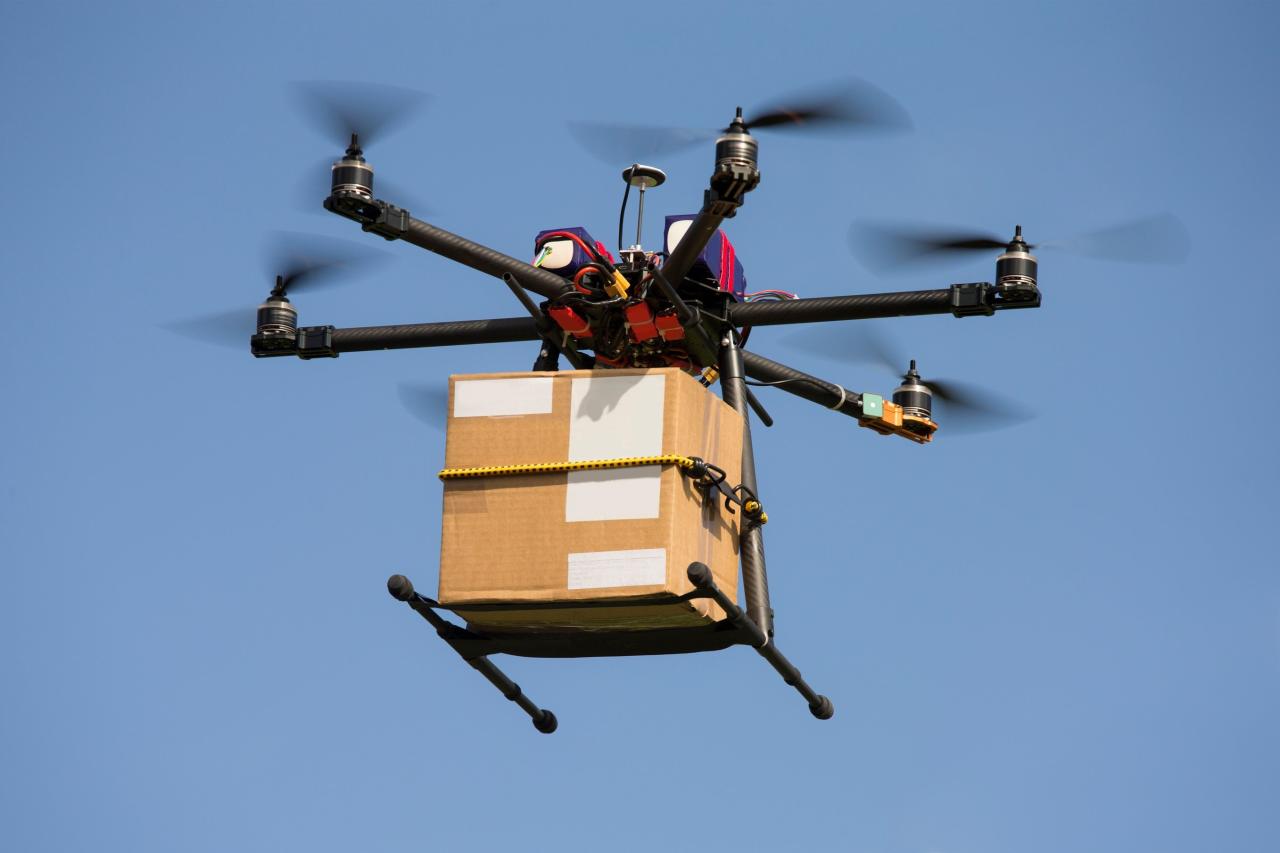
Amazon’s drone delivery program, while innovative, faces significant logistical hurdles. Choosing the right locations is crucial for success, requiring careful consideration of several key factors that impact operational efficiency, safety, and regulatory compliance. These factors interplay to determine where Amazon can effectively and safely deploy its drone fleet.
Key Criteria for Location Selection
Amazon prioritizes locations offering a balance between operational feasibility and market demand. High population density, combined with sufficient infrastructure and favorable regulatory environments, are paramount. Other considerations include proximity to existing Amazon facilities to streamline logistics and minimize transportation costs. The availability of suitable airspace, free from obstacles and within established flight corridors, is also a critical factor.
Finally, the presence of a robust communication network ensures reliable drone control and data transmission.
Population Density and Delivery Areas
Population density plays a significant role in determining the viability of drone delivery. Densely populated areas, such as suburbs and certain parts of cities, offer a higher concentration of potential customers, justifying the investment in drone infrastructure and operations. However, navigating complex airspace and managing potential safety risks in densely populated areas presents unique challenges. Conversely, sparsely populated rural areas may offer simpler airspace but present economic challenges due to lower delivery volumes and potentially greater distances between delivery points.
The optimal population density for drone delivery lies in a balance between market demand and operational complexity. For example, a suburban area with a relatively high population density and established residential areas might be ideal, while a highly congested urban center might present too many obstacles.
Infrastructure’s Impact on Location Choices
Adequate infrastructure is essential for successful drone delivery. This includes robust communication networks (4G/5G) for real-time data transmission and drone control, reliable GPS signals for precise navigation, and compliant airspace regulations that allow safe drone operations. The availability of suitable landing zones, free from obstacles and within the designated flight path, is also crucial. Areas with limited cellular coverage or strict airspace restrictions may be less suitable for drone delivery operations.
For instance, areas with strong and consistent 5G coverage are preferable for reliable drone control and data transmission. Conversely, locations with restricted airspace due to airports or military installations would likely be excluded.
Urban vs. Suburban vs. Rural Drone Delivery Challenges, Amazon drone delivery locations
Deploying drone delivery presents unique challenges across different geographical settings.
So, Amazon’s planning drone delivery in a bunch of places, right? It’s a big logistical puzzle, figuring out the best locations. However, safety is key, and incidents like the recent paris drone crash highlight the importance of careful planning and robust safety measures for any large-scale drone operation. This means Amazon needs to carefully consider airspace regulations and potential hazards when selecting their drone delivery locations.
| Factor | Urban | Suburban | Rural |
|---|---|---|---|
| Population Density | High | Medium | Low |
| Infrastructure Availability | Potentially variable; high population density can mean congested airspace and complex infrastructure | Generally good; established infrastructure and residential areas | Often limited; sparse population may mean limited infrastructure |
| Regulatory Hurdles | High; complex airspace regulations and potential safety concerns | Medium; manageable airspace and established infrastructure | Low; simpler airspace and less stringent regulations, but potentially larger distances to cover |
| Operational Complexity | High; navigating congested airspace and managing numerous obstacles | Medium; relatively straightforward operations with established infrastructure | Low; simpler airspace and fewer obstacles, but potentially longer flight times |
Customer Experience and Drone Delivery Locations
The customer experience with Amazon’s drone delivery program is designed to be seamless and convenient, from the initial order placement to the final delivery to the customer’s doorstep. This involves a carefully orchestrated process encompassing order tracking, communication updates, and robust safety protocols. The success of this system heavily relies on the suitability of the delivery location and the infrastructure in place.The entire process begins when a customer places an order through the Amazon app or website.
Eligible items are identified as suitable for drone delivery, and customers are given the option to select this delivery method at checkout. Once the order is placed, the customer receives regular updates about the drone’s progress via the app, including estimated delivery times and real-time tracking of the drone’s flight path. Upon successful delivery, the customer receives a confirmation notification.
This streamlined process aims to minimize inconvenience and maximize transparency for the customer.
Drone Delivery Status Communication
Amazon utilizes several methods to keep customers informed throughout the drone delivery process. Primarily, the Amazon app serves as the central hub for updates. Customers receive push notifications with real-time tracking information, estimated delivery windows, and alerts for any unforeseen delays. These notifications are typically accompanied by visual representations of the drone’s location on a map. In some cases, customers might also receive email or SMS confirmations, particularly for pre-delivery and post-delivery notifications.
The frequency and method of communication are designed to balance providing sufficient information without overwhelming the customer with excessive updates.
Drone Delivery Safety Protocols
Safety is paramount in Amazon’s drone delivery program. Several protocols are in place to ensure secure and reliable deliveries. Drones are equipped with multiple sensors and fail-safes to detect and avoid obstacles, including people, animals, and other aircraft. Advanced flight planning algorithms are used to optimize flight paths, considering factors such as weather conditions and airspace restrictions.
So, Amazon’s expanding its drone delivery locations, aiming for faster shipping. It makes you wonder about safety, though, especially considering recent incidents like the ones reported in drone crashes in Paris ; that really highlights the need for robust safety protocols before widespread drone delivery becomes a reality. Ultimately, the success of Amazon’s drone delivery program hinges on reliable technology and a focus on safety.
Regular maintenance and inspections are performed to ensure the drones are in optimal operating condition. In the event of a malfunction or emergency, the drones are programmed to land safely and automatically. Amazon also works closely with regulatory bodies to comply with all relevant aviation regulations and safety standards.
Customer Feedback on Drone Delivery Experiences
Customer feedback varies slightly depending on the location type. In urban areas, feedback generally highlights the convenience and speed of drone delivery, particularly for smaller, time-sensitive items. However, some urban customers have expressed concerns about noise levels and the visibility of drones in densely populated areas. In suburban areas, the experience tends to be more positive, with customers appreciating the quiet and efficient nature of drone deliveries.
Concerns are less frequent, mostly revolving around occasional delays due to unforeseen weather conditions. In rural areas, drone delivery is often viewed as a game-changer, providing access to faster delivery times than traditional methods. However, the limited availability of drone delivery service in these areas remains a point of feedback. Overall, the feedback suggests a positive trend, with customers generally satisfied with the speed, convenience, and efficiency of drone delivery, although ongoing improvements are continually being implemented based on user experiences and technological advancements.
Future Expansion of Amazon Drone Delivery Locations
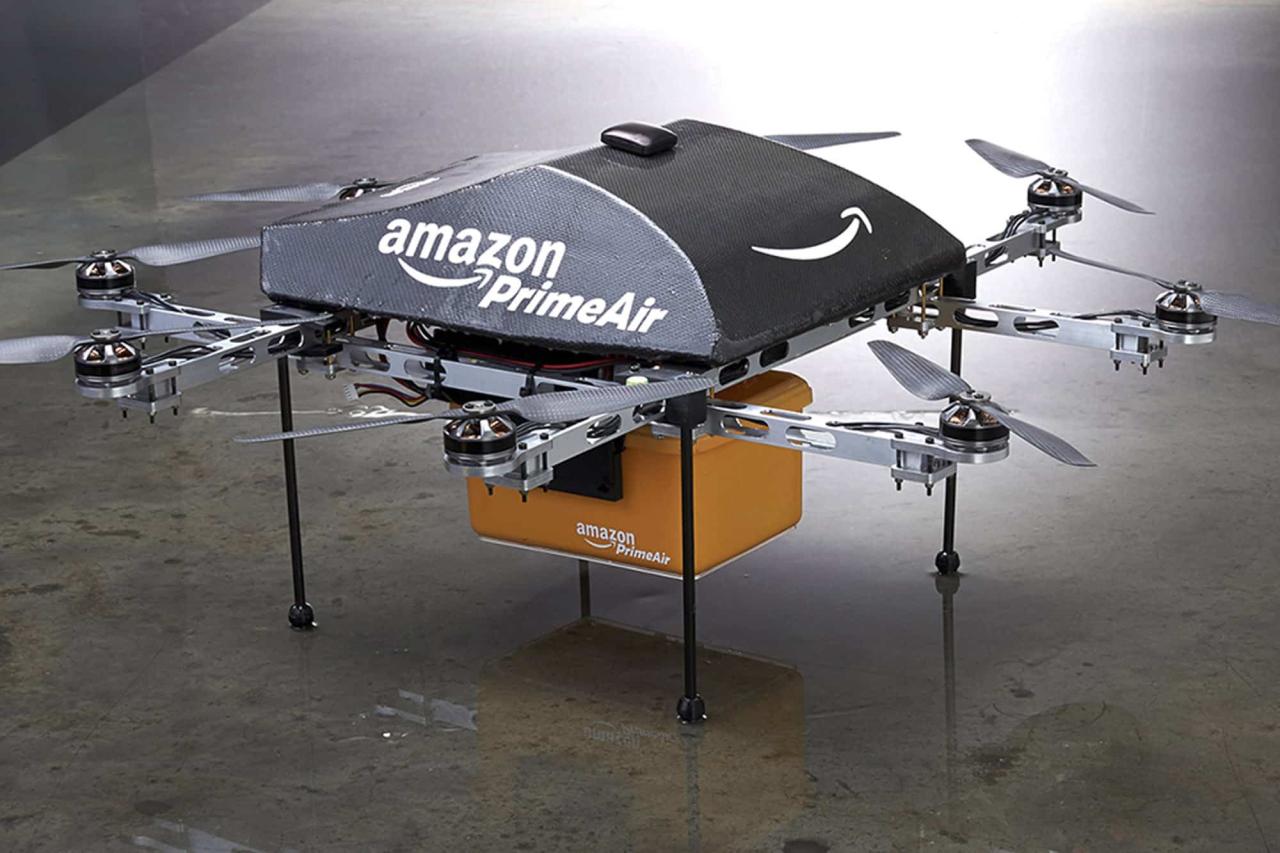
Amazon’s drone delivery program, while still in its relatively early stages, shows significant promise for revolutionizing last-mile delivery. Its current operational areas provide valuable data and experience, paving the way for a substantial expansion in the coming years. This expansion will likely be driven by technological advancements, increasing customer demand, and strategic business decisions.
Predicting the precise locations of future expansion is challenging, but several factors point to likely candidates. Areas with high population density, robust internet infrastructure, and existing Amazon fulfillment centers are prime targets. Furthermore, locations with favorable weather conditions, minimizing flight disruptions, will be prioritized. Suburban areas, which often experience longer delivery times with traditional methods, are also likely to see increased drone delivery service.
Potential Future Expansion Areas
Amazon will likely prioritize expanding into suburban areas surrounding major metropolitan areas already served by drone delivery. Areas like the rapidly growing suburbs of Atlanta, Dallas, and Phoenix, with their significant online shopping populations and relatively flat terrain, are good examples of potential expansion zones. Expanding into smaller cities and towns with reliable infrastructure but lacking extensive ground delivery networks could also be a strategic move, offering a competitive edge and improved delivery speed for customers in these areas.
This would mirror Amazon’s successful strategy of establishing fulfillment centers in less densely populated regions to serve wider geographic areas.
So, Amazon’s expanding its drone delivery locations, aiming for wider coverage. It makes you wonder about the complexities of airspace management, especially considering incidents like the mystery drone Paris situation, which highlighted potential security concerns. Understanding these challenges is key to successfully scaling up Amazon’s drone delivery network.
Hypothetical Expansion Plan
A phased approach to expansion would be prudent. Phase 1 (Years 1-3) would focus on expanding into geographically proximate areas to existing drone delivery hubs, utilizing learnings from current operations to refine logistics and infrastructure. This would involve enhancing existing fulfillment centers to accommodate drone operations and recruiting and training additional drone pilots and maintenance personnel. Phase 2 (Years 4-7) would target strategically selected suburban and smaller city locations, prioritizing areas with strong online shopping activity and favorable weather conditions.
This phase would necessitate investment in new drone delivery hubs and potentially the development of autonomous drone management systems. Phase 3 (Years 8+) would focus on further geographic expansion, potentially including rural areas, once technological advancements such as fully autonomous drone operation and extended range capabilities become more reliable and cost-effective.
Impact of Technological Advancements
Improved drone technology, such as enhanced battery life, autonomous navigation, and improved sensor capabilities, will significantly influence future location selection. Longer flight ranges will allow drones to cover larger service areas from fewer hubs, potentially making drone delivery economically viable in more sparsely populated regions. Autonomous navigation will reduce the reliance on highly skilled pilots and increase operational efficiency, making drone delivery more scalable and cost-effective.
Advanced obstacle avoidance systems will also broaden the scope of potential delivery locations, including more complex urban environments.
Factors Limiting Expansion
Several factors could hinder the expansion of Amazon’s drone delivery program.
- Regulatory hurdles: Varying and evolving drone regulations across different jurisdictions can create significant barriers to expansion. Obtaining necessary permits and approvals can be time-consuming and expensive.
- Infrastructure limitations: The lack of adequate internet connectivity or suitable drone landing zones in certain areas could limit expansion. Reliable infrastructure is crucial for efficient drone operation and data transmission.
- Public acceptance and safety concerns: Addressing public concerns regarding drone noise, privacy, and safety is vital for successful expansion. Building public trust and demonstrating the safety and reliability of drone delivery is essential.
- Weather conditions: Adverse weather conditions, such as strong winds or heavy rain, can significantly impact drone operations, limiting expansion into areas with unpredictable weather patterns.
- Economic viability: The cost of operating and maintaining a drone delivery fleet, including pilot salaries, maintenance, and insurance, must be balanced against the potential revenue generated. Expansion will depend on demonstrating the economic viability of drone delivery in different geographic areas.
Environmental and Societal Impacts of Drone Delivery Locations
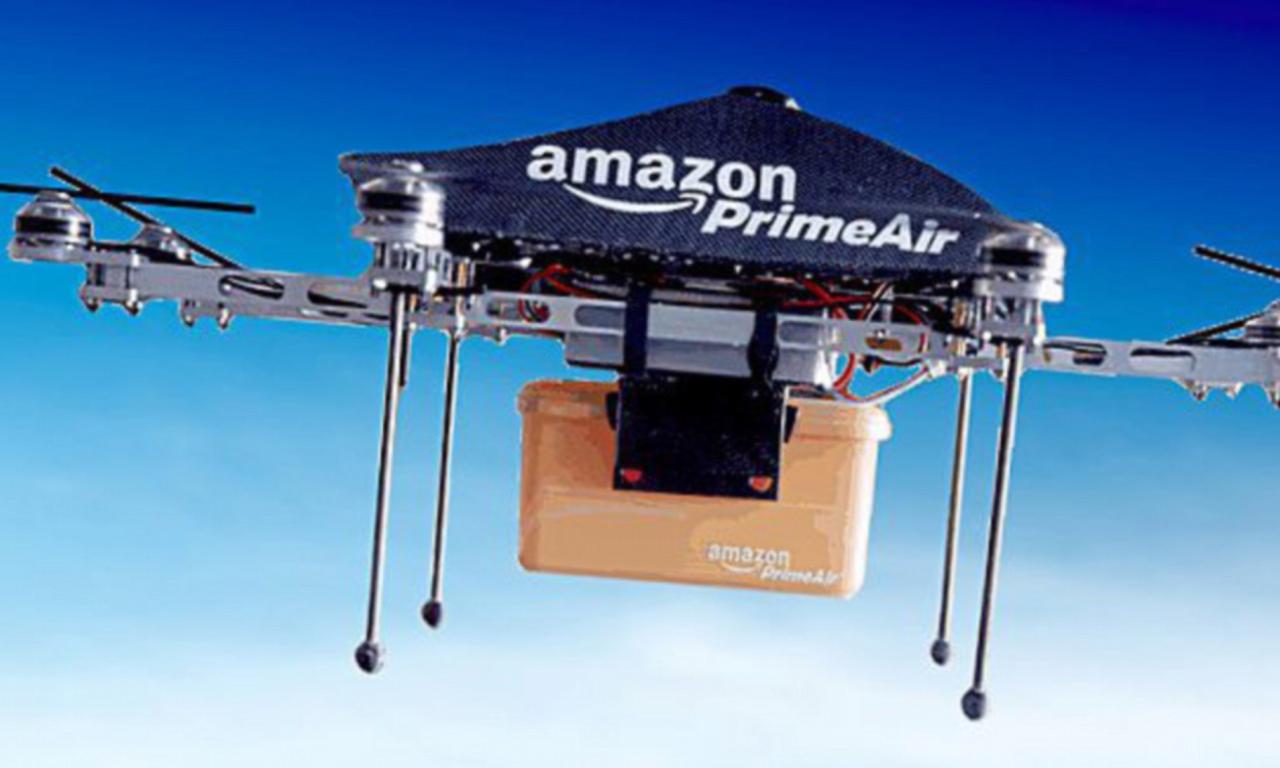
Drone delivery, while offering speed and efficiency, presents significant environmental and societal considerations. The impact on our planet and communities needs careful assessment and proactive mitigation strategies to ensure responsible implementation of this technology. This section examines these impacts and explores potential solutions.
Environmental Impact of Drone Deliveries
The environmental footprint of drone delivery is a complex issue encompassing both fuel consumption and noise pollution. Electric drones offer a significant reduction in greenhouse gas emissions compared to traditional delivery vehicles, particularly for shorter distances. However, the manufacturing process of drones and batteries, along with the energy required for charging, contribute to the overall environmental cost. Noise pollution from drone operations, especially in densely populated areas, is another concern impacting residents’ quality of life.
Ongoing research and technological advancements are crucial in minimizing these negative impacts.
Societal Impact of Drone Delivery on Employment and Logistics
The introduction of drone delivery presents a potential shift in the employment landscape. While it may automate certain aspects of delivery, creating new jobs in drone maintenance, operation, and software development, it could also displace jobs in traditional delivery services. The logistics industry will experience a transformation, requiring adaptation to the integration of drones into existing delivery networks. Effective workforce retraining programs and proactive planning are necessary to mitigate potential job displacement and ensure a smooth transition.
Mitigation Strategies for Negative Environmental and Societal Consequences
Several strategies can help minimize the negative impacts of drone delivery. Promoting the use of electric drones powered by renewable energy sources significantly reduces carbon emissions. Implementing noise reduction technologies in drone design and operational protocols can mitigate noise pollution. Investing in comprehensive workforce retraining programs for those displaced by automation ensures a smoother transition for affected workers.
Furthermore, strategic planning for drone delivery infrastructure, considering population density and environmental sensitivities, can optimize efficiency while minimizing negative consequences.
Comparison of Carbon Footprint: Drone Delivery vs. Traditional Delivery
Imagine a table comparing the carbon footprint of delivering packages of varying sizes (small, medium, large) using drones versus traditional delivery trucks. Let’s assume, for illustrative purposes, that a small package (e.g., a book) has a significantly lower carbon footprint when delivered by drone due to the short distance and the drone’s efficiency. A medium-sized package (e.g., a small appliance) might show a closer carbon footprint comparison, depending on distance.
A large package (e.g., a bulky furniture item) would likely have a higher carbon footprint via drone delivery due to the increased weight and energy consumption. This table would highlight that the most effective method depends on the package size and delivery distance, with drones excelling in short-distance, small-package delivery. The exact figures would require detailed data based on specific drone models, fuel sources, and delivery routes, as well as the type of vehicle used in traditional delivery.
The general principle remains that optimization depends on the specifics of the delivery scenario.
Concluding Remarks
Ultimately, Amazon’s drone delivery program represents a significant shift in logistics, promising faster and more efficient deliveries while raising important questions about environmental sustainability and societal impact. As the program expands, understanding the factors influencing location selection and the overall customer experience will be crucial to its success. The future of package delivery may well be airborne, and this guide provides a solid foundation for understanding its evolution.
Detailed FAQs: Amazon Drone Delivery Locations
How much does Amazon drone delivery cost?
Currently, Amazon doesn’t charge extra for drone delivery; it’s integrated into standard Prime shipping for eligible items.
What happens if the drone encounters bad weather?
Amazon’s drones are designed to detect and avoid bad weather. Deliveries are automatically delayed or rerouted if necessary. Customers are notified of any changes.
What if my package is damaged during drone delivery?
Amazon’s standard return and refund policies apply to drone deliveries. If your package is damaged, contact Amazon customer service for assistance.
Are there weight or size restrictions for drone deliveries?
Yes, there are weight and size limitations. Only smaller, lighter packages are currently eligible for drone delivery. Check the Amazon website for specific details.
